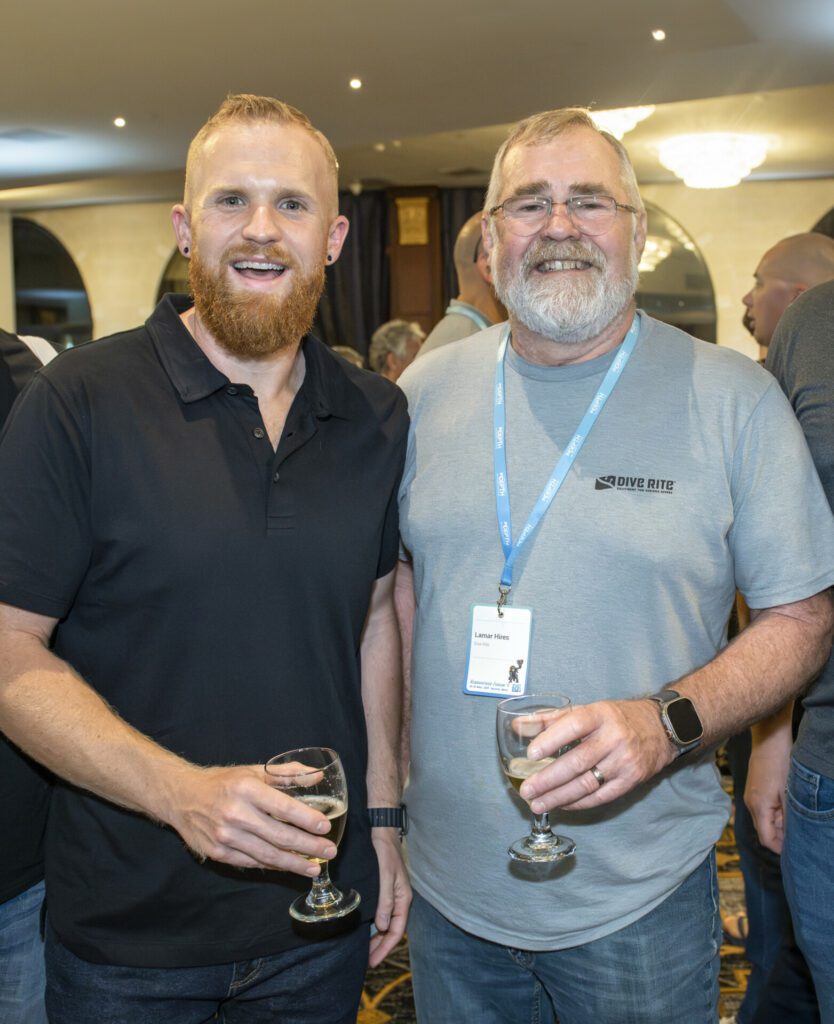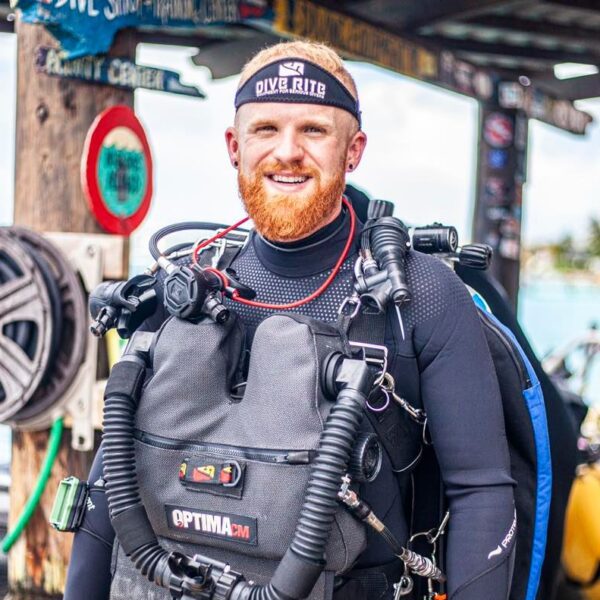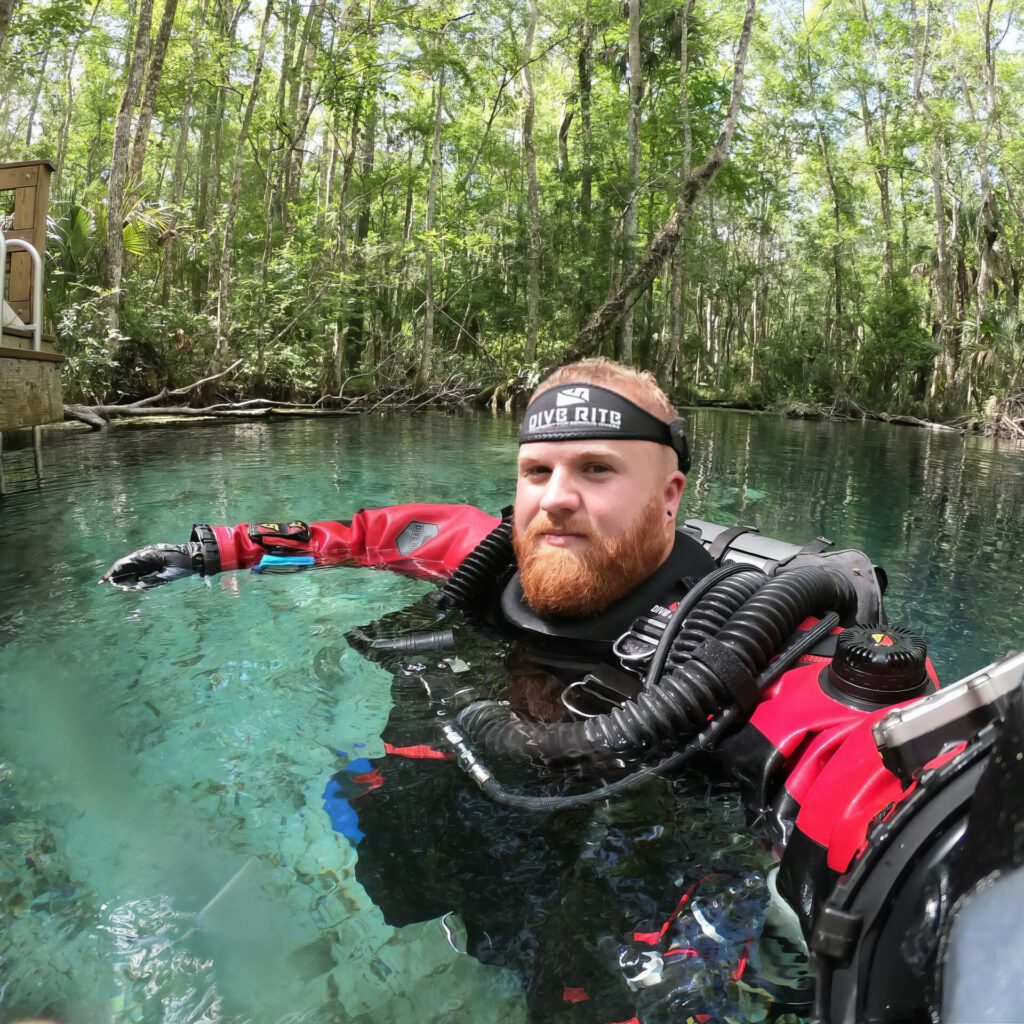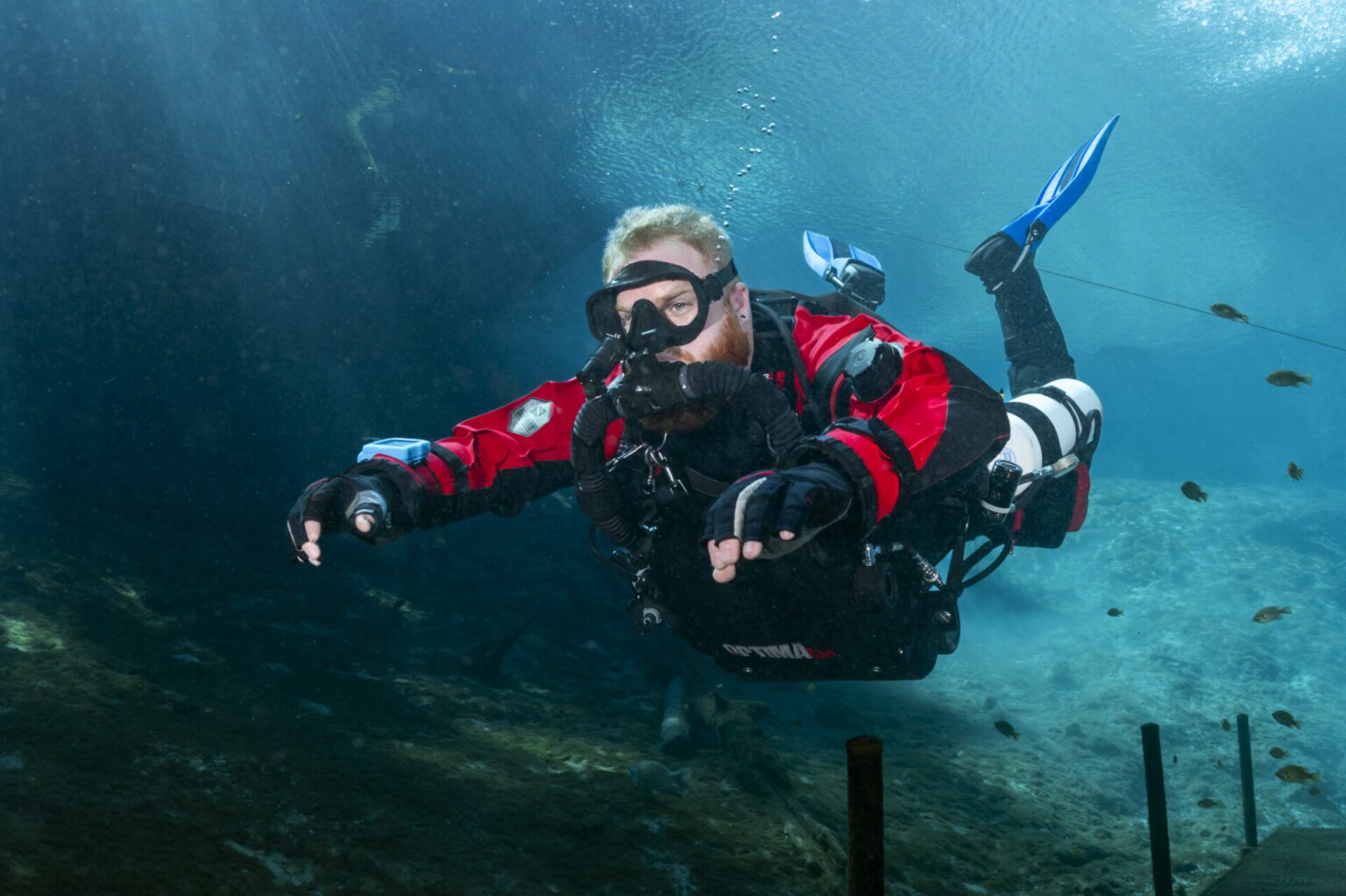Social media was rampant with speculation after the news broke of the tragic death of Dive Rite General Manager Jared Hires in the Plura cave system in Norway last week.
It was, sadly, an inevitable sign of the times, and far too many armchair experts raised their heads above the parapet to voice their opinions. This cannot have made things any easier for the Hires family as they dealt with their grief, so it is even more of a statement about the unbelievable strength and resilience of his parents, wife, two young children and other relatives in that they have requested that the preliminary accident analysis by Divers Alert Network (DAN) be released.

Below is the analysis, but it concludes that this sad loss was caused by a medical event, and was not down to equipment failure, or an error on the part of the diver.
Divers Alert Network preliminary accident analysis
The basis of this preliminary analysis (9 April 2024) includes an interview of one of the diver’s dive partners, who witnessed the event, conversations with the diver’s father after the event, and the downloads of the CCR controllers of all three divers on the dive.
The incident
A team of three experienced rebreather divers planned to execute a check-up dive in preparation for a deeper dive the following day to confirm that all gear was in working order after travel. All three divers used adequate equipment that they were familiar with and wore adequate thermal protection for the dive. It was their first dive in Plura on this trip, however, Divers One and Three had dived the system in previous years.
Diver One (witness) took the lead, followed by Diver Two, and Diver Three (Jared Hires) in the back. The first half of the dive was uneventful with a maximum depth of 34m, all three divers surfaced after 30 minutes in the air-filled ‘Wedding Chamber'.
The dive was planned as a circuit, but the Wedding Chamber did mark the approximate half-time point of the dive. The team briefly discussed and confirmed that all equipment was in working order and everyone was feeling well and descended again after two minutes at the surface in the same formation with Diver One in the lead and Diver Three in the back.
The CCR controllers logged this as a separate dive. Consulting the logs provided by the team, the descent for this second dive was also uneventful for all three divers until minute 16, when Diver Three’s log shows a sudden descent from 25m to 29m in less than 20 seconds.
At this point, Diver One had turned around to assist Diver Two deploying a back-up light after their primary light had failed. While reconfiguring their formation to put Diver Two in the lead, Diver One witnessed Diver Three's light moving erratically and recalls hearing Diver Three screaming, potentially trying to articulate a problem.
When Diver One reached Diver Three, he was already in full tonic-clonic convulsions. His loop was not in his mouth but was found to have been closed, which suggests that Diver Three had attempted to bail out but was not able to get his bailout regulator into his mouth in time before the onset of his seizures.
After unsuccessful attempts by Diver One to secure Diver Three's airway, he proceeded to swim the still-convulsing diver towards the exit, a distance of roughly 250 metres, with several depth changes. When Diver Three had stopped seizing after approximately three minutes, Diver One tried to insert a regulator into his mouth again but could not unclench Diver Three's jaw, so he proceeded to swim him out of the cave.
He signalled Diver Two to swim ahead and to alert the surface and call for assistance. A diver at the surface was able to meet them close to the exit and assist in bringing Diver Three to the surface. Diver One and Three surfaced after 31 minutes (17 minutes after onset of convulsions).
CPR was initiated immediately, and oxygen and AED were ready within minutes after surfacing and used before and in conjunction with local EMS response via ambulance and helicopter. Unfortunately, all resuscitation efforts by the team at the surface and EMS for almost 2 hours remained unsuccessful.

Medical history
After communication with the deceased diver’s family, it has come to light that Jared Hires had an unprovoked seizure for the first time the previous year, and that there is a family history of very rare and to this date, medically unexplained seizures, in these cases connected with overexertion, stress, and dehydration.
Outside of the recreational and technical diving industry, Dive Supervisors around the world verbally confirm with the diver (before diving operations commence) that the diver wants to dive and that they are well.
Jared Hires told his diving team on Wednesday 3 April 2024 that he had slept well, was not jetlagged, and was feeling rested that day. It must be mentioned however, that the week before the trip to Norway, the diver had displayed symptoms of a viral infection with flu-like symptoms and gastrointestinal involvement, which may have added to potentially existing electrolyte imbalance and dehydration from intercontinental air travel.
Seizure not due to oxygen toxicity
A word about oxygen toxicity and why this was most likely not oxygen toxicity – When reading about seizures in diving, a logical first conclusion people jump to is central nervous system oxygen toxicity, which presents in symptoms just as the ones described above.
Plenty of literature is available on the topic and training courses as early as open water or, at the very latest, Enriched Air Nitrox courses, cover the topic. Rebreather divers are painfully aware of the three ‘H's – Hyperoxia, Hypoxia, and Hypercapnia – which each can lead to disabling injury and death/drowning while diving.
The review of the logs of this dive does not support the theory of an oxygen-induced seizure. At no point before the event did oxygen levels or cell readings spike significantly.
The ppO2 very briefly (less than one minute) exceeded the high setpoint (set to 1.2) to 1.3. Changes in ppO2 are only seen after the event and are easily explained by the solenoid still firing and the efforts of Diver One to vent and inflate equipment to exit the cave.
The narrative suggests that Diver Three seems to have felt the onset of a seizure, which makes an underlying medical condition more likely than an oxygen-induced seizure.
These seizures rarely present with an aura or warning signs. A medical event is also more consistent with the duration and quality of the witnessed seizure, which would best be described as a Grand Mal rather than oxygen toxicity.
Unprovoked seizures can develop suddenly and at any age. The risk of recurrence of a seizure after an individual has experienced a single unprovoked seizure has been published in a comprehensive literature review in 2023, and it states that the likelihood of seizure recurrence is between 25% and 41% in the first six months to two years.

Summary
After careful review and consultation with experts in diving accident analysis, DAN concludes that this tragic accident was caused by a medical event and predisposition of the diver, and that neither equipment failure or error in human-machine interaction is responsible for the outcome.
This was an incident while diving, not a diving incident. The diver was likely not aware of the implications that a first-time unprovoked seizure could have. The dive team did everything humanly possible in this challenging environment to rescue the diver.
In summary, DAN feels that it is important to educate the diving community about medical and physiological issues that, while easily manageable at the surface, can prove fatal when experienced underwater, especially in extreme environments.
Photo credit: Jason Brown, Dive Rite and Walt Stearns








